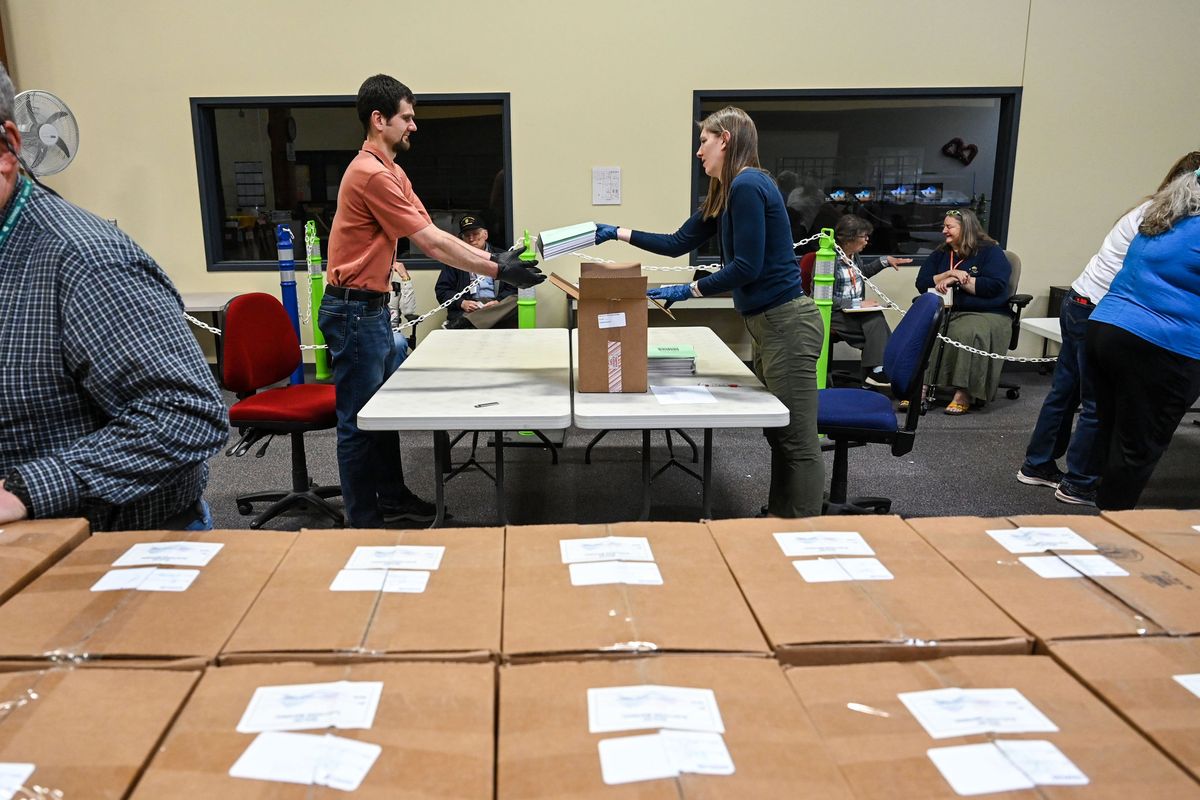Cheney man pays for recount of single precinct’s school district votes to ensure system working properly

The Spokane County Elections Office Tuesday conducted a recount of ballots cast for a single precinct during the special election in February.
It was only a fraction of the ballots cast for the Cheney School District’s levies and bond measures, and the outcome of the recount would not have affected election results.
But Bill Johns, the man who requested and paid for the recount, felt it needed to be done.
“I’ve watched elections for a long while,” Johns said. “I mean, it’s one of the most important things to this country.”
Johns said he called for the recount of his precinct in Cheney to ensure the system used to tabulate votes in the county is working as it should. He did not have any specific concerns about the results, or his precinct, but wanted to verify nothing nefarious was going on with the electronic machines used to count the ballots.
He compared the recount to tests conducted on bridges, roads and water and sewer systems to ensure they’re working properly, something he has experience with as a retired civil engineer of 40 years.
“When we build a bridge, we test concrete, we test the steel, we test throughout the whole process,” Johns said. “No one notices until something is wrong.”
Anyone can request a recount in the state of Washington, if they’re able to afford it.
The more extensive the recount gets, with multiple precincts or an election with more ballots cast, for example, the more it can cost the requester.
Mike Mclaughlin, the county’s elections manager, said Tuesday’s recount would likely cost Johns around $1,000, which accounts for the cost of posting the public notices of the recount and the cost of labor. That includes about an hour or so of preparation ahead of time and the three hours it took for county employees to unpack, sort and hand count the ballots.
Johns and his wife, Mary Johns, observed the recount at the elections office on the county campus Tuesday, following the process step by step. Also in attendance were Kim Slinger and Tom Barnhart, precinct officers for the county GOP.
Johns contacted the party to inform them of his requested recount and to extend an invitation to observe alongside him, but he said they did not help organize the effort and did not contribute financially.
Mclaughlin and city staff started by collecting the sealed cardboard boxes containing every ballot cast in the county during the special election that were secured behind two sets of doors in the back of the office. The boxes were then wheeled into a large room and opened, and the ballots within were combed through to locate the ones cast in Johns’ precinct.
Ballots are collected and stored in the batches they were originally counted in, which can include multiple precincts, Mclaughlin said.
Once the proper ballots were located, two county employees counted the results by hand, sorting the affirmative and dissenting votes into separate piles, handling one measure at a time. One employee counted all of the affirmative votes for a single measure, while the other counted the dissenting, and then they switched to make sure each pile was counted twice.
Undervotes and overvotes were separated into a third pile, and were also counted by each employee. The two would note their counts on separate forms and then compare at the end to ensure they matched up.
Johns and Barnhart, who sat at the table during the process, then verified the counts were the same and signed off the figures.
“When I don’t find something, that’s when I’m the happiest,” Johns said.
The same process is followed for every recount the county conducts, no matter the scope or when the election occurred, or if the recount was requested or mandatory. Tuesday’s recount results for the precinct were identical to the initial tabulation from using the electronic machines, Mclaughlin said.
Spokane County Auditor Vicky Dalton said the elections office has done more than its fair share of recounts over the years, which has helped them make the process as efficient, effective and transparent as possible.
After the recount, Johns said he was reassured to learn the system was working as it should.
The county conducts its internal audits after every election, either through batch audits that focus on randomly selected precincts or ballot batches, or through risk-limiting audits, which use time-tested statistical probabilities to verify results.
Before an election, all of the counties’ state and independently certified machines are tested to ensure they are accurately counting votes. The Office of the Secretary of State also reviews each county periodically.
Johns said he’d still like to see more citizens advocate and fund other recounts, even if they are small in scope, to ensure elections in the U.S. continue to operate smoothly.
“The test was good, but it’s one precinct out of several,” Johns said. “I wish more people would do it because people have to know it’s OK.”